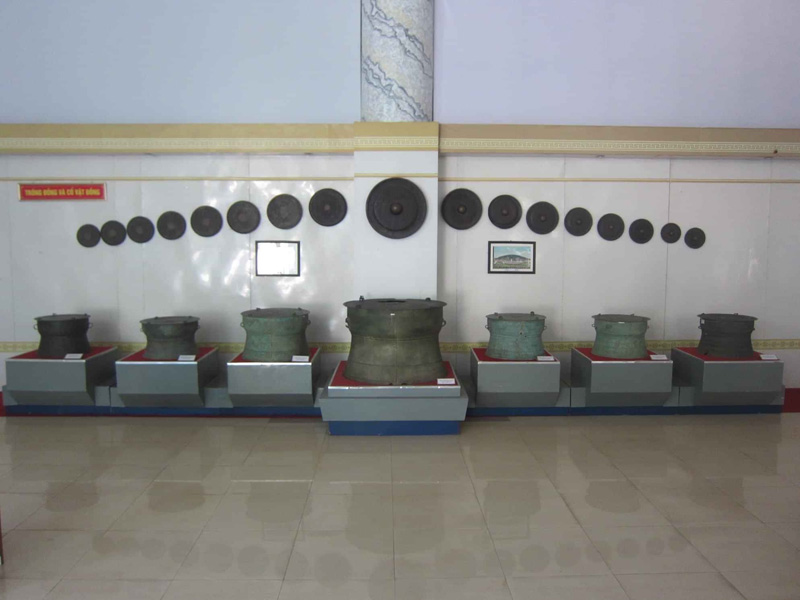


 The bronze drums are displayed at the Provincial Museum.
The bronze drums are displayed at the Provincial Museum.
Bronze drums found in Hoa Binh are mostly Heger bronze drums type II with different early or late groups. The date of Heger drum type II lasted from the first to the seventeenth century.
According to the statistics, Hoa Binh province has discovered over 100 bronze drums, of which the earliest discovered drum was the Song Da drum (discovered in 1887). This is a Heger drum Type I and a Dong Son drum of group A type I. This drum is currently stored at the Guimet Museum (in France).
Ms. Nguyen Thi Thi, Director of the Provincial Museum, says that the bronze drums type II have been attached to Muong ethnic people for a long time. They have concentrated in the residence area of Muong ethnic people. The bronze drum type II is a symbol of the vitality of the Dong Son civilization, it is also a symbol of confirming the power of Vietnamese feudalism over Lang Muong areas, demonstrating the political unity of Vietnam - Muong. Bronze drums are closely associated with Muong ethnic people's life. The bronze drum type II is a cultural symbol of Muong ethnic people, which is typical for Muong identity. With the above meanings, Heger bronze drums type II can be called Muong drums. Currently, 73 bronze drums are kept in the store of the Provincial Museum, 15 pieces are kept in the warehouse of the People's Committee of Kim Boi district, the rest is in the archive of some agencies and localities in the province.
For Muong ethnic people, the bronze drum is a sacred artifact, symbolizing the power and wealth of Lang class ... The bronze drum is a friend of the living people, serving the physical and spiritual needs of the living, and it is also a friend of the the dead and it is also a mourning for the dead. Bronze drums are found in almost all districts in the province. Apart from some drums found in ancient Muong tombs, the rest are mainly discovered by chance when people dig ditches, build houses, build roads ...
If Dong Son drum is a symbol of Vietnamese culture and civilization, then the bronze drum type II can be considered as a cultural symbol of Muong ethnic people in Vietnam. The drum has its own beauty, with the patterns created by the stamp-printing method, especially the fillet pattern, which has has turned the drum face like a carpet woven with beautiful patterns, repeating like patterns on the brocade plates of Muong ethnic people in Hoa Binh.